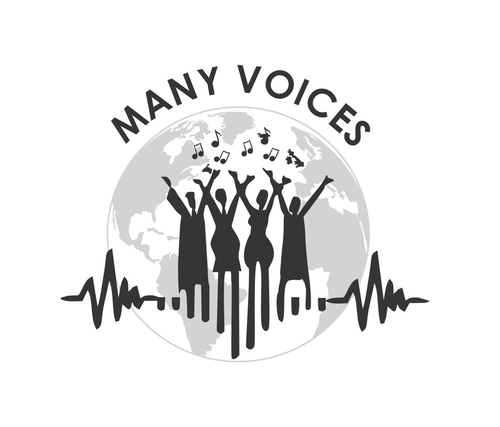Review: 1
29 Jan 2025

STAGE 1

Does synchronised singing enhance social bonding more than speaking does? A global experimental Stage 1 Registered Report
Do humans bond more when singing together or speaking together? A global investigation
Recommended by Katherine Moore based on reviews by Melissa Brandon, Erin Hannon, Manuela Maria Marin and Anja GöritzMusic is a universal across human cultures, but there is debate as to why and how it evolved. For example, Pinker has famously argued that music is “auditory cheesecake,” with no biological value (Pinker, 1997). Most scholars on the evolution of music make comparisons with language, another human universal that is unique to our species (Friederici, 2017). A current leading hypothesis in the evolution of music is the social bonding hypothesis, which suggests that music plays a special role in social bonding beyond the role that language plays (Savage et al., 2021).
Previous studies have provided evidence that synchronized music-making can promote social bonding (e.g. Stupacher et al., 2021). However, it is unclear whether synchronous singing provides any advantage in social bonding as compared to merely speaking. Previous work on this topic has at times lacked sufficient controls and has potentially been subject to publication bias—it could be that only the studies with statistically significant findings are in the published literature, when in fact additional experiments may have been run with unpublished null results. Also critically, prior studies have been subject to sampling bias—the vast majority are limited to a small set of cultures and musical styles, focusing primarily on English-speaking cultures and western music (Henrich & Heine, 2010). If music has evolved as a mechanism for social bonding, then it is especially critical to demonstrate its effects on social bonding across a wide range of cultures.
In a remarkable global collaboration including 88 collaborators from six continents, Savage et al. (2025) plan to collect data on synchronized singing and speech from 1710 participants across 57 research sites. Participants will be assigned to participate in (1) a synchronized singing activity, (2) a synchronized speech activity, or (3) a natural, prompted conversation.
At each research site, participants will gather in groups of 5-10 and will be randomly assigned to one of the three conditions (for the research site to be valid, it must recruit one group of participants into each condition). The experiment will start with pre-test measures of social bonding and other variables. Next, the intervention will commence. In the singing condition, participants will synchronously sing a song that is highly familiar in that culture. In the lyrics recitation condition, participants will synchronously speak printed lyrics to the songs from the singing condition (twice through, to account for speed differences in song and speech). In the conversation condition, participants will have a natural conversation in response to an ice-breaker question. Finally, each group will engage in post-test measures of social bonding as well as debriefing.
The social bonding hypothesis predicts that participants in the synchronized singing task will experience more social bonding (as measured by a pre- and post-test differences) than will participants who engage in sequential conversation or synchronous lyrics recitation in the absence of musical pitch or rhythm. The unprecedented scale of this global, cross-cultural investigation will make a great impact on the field and on our understanding of the relationship among speech, song, and social connection, regardless of the outcome.
Four expert reviewers provided valuable feedback through two rounds of review. Based on detailed responses to the reviewers’ and the recommender’s comments, the recommender judged that the manuscript met the Stage 1 criteria and therefore awarded in-principle acceptance.
URL to the preregistered Stage 1 protocol: https://osf.io/7t4ck
Level of bias control achieved: Level 6. No part of the data or evidence that will be used to answer the research question yet exists, and no part will be generated until after IPA.
List of eligible PCI RR-friendly journals:
List of eligible PCI RR-friendly journals:
- Advances in Cognitive Psychology
- Biolinguistics
- Collabra: Psychology
- Experimental Psychology *pending editorial consideration of disciplinary fit
- International Review of Social Psychology
- Journal of Cognition
- Peer Community Journal
- PeerJ
- Royal Society Open Science
- Social Psychological Bulletin
- Studia Psychologica
- Swiss Psychology Open
References
1. Friederici, A. (2017). Language in Our Brain: The Origins of a Uniquely Human Capacity. https://doi.org/10.7551/mitpress/9780262036924.001.0001
2. Henrich, J., Heine, S. J., & Norenzayan, A. (2010). The weirdest people in the world? Behavioral and Brain Sciences, 33, 61-83. https://doi.org/10.1017/s0140525x0999152x
3. Pinker, S. (1997). How the mind works. WW Norton & Company.
4. Savage, P. E., Loui, P., Tarr, B., Schachner, A., Glowacki, L., Mithen, S., & Fitch, W. T. (2021). Music as a coevolved system for social bonding. Behavioral and Brain Sciences, 44, e59. https://doi.org/10.1017/S0140525X20000333
5. Savage, P. E. et al. (2025). Does synchronised singing enhance social bonding more than speaking does? A global experimental Stage 1 Registered Report. In principle acceptance of Version 7 by Peer Community in Registered Reports. https://osf.io/7t4ck
6. Stupacher, J., Mikkelsen, J., & Vuust, P. (2022). Higher empathy is associated with stronger social bonding when moving together with music. Psychology of Music, 50, 1511-1526. https://doi.org/10.1177/03057356211050681

